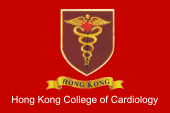Abstract
The study aims to evaluate the feasibility and effect of percutaneous laser myocardial revascularization (PMR) in patients with refractory class III-IV angina. Patients were selected by: (1) angina class ≥III; (2) unsuitable to CABG and PTCA; (3) LVEF ≥30%; (4) absence of myocardial infarction in 6 months; (5) maximum diastolic wall thickness of left ventricle (LV) ≥8 mm in echocardiography. Eclipse Holmium laser generator and catheter were used. Eighteen patients (17 male and 1 female) with age of 63.3±7.5 years and a history of angina for 9.6±7.0 years were studied. They were refractory to 5.8±0.7 antianginal drugs. The angina class was IV in 11 patients and III in 9 patients. Maximum diastolic LV wall thickness was 10.2±0.8 mm. LVEF was 41.2±6.2%. Eleven and 9 patients had triple vessel and double vessel diffuse disease, respectively. A mean of 19.7±6.3 endomyocardial channels were made. Procedure time was 78.2±12.5 minutes and radiation time 24.3±7.4 minutes. There were no complications. During the follow-up of 18.7±1.6 months, angina class decreased from 3.8±0.7 to 2.1±0.8 (P<0.05). Ischemia in SPECT was significantly improved. PMR using Eclipse Holmium laser generator and catheter is safe in Chinese patients. This results suggest that patients with refractory class III or IV angina could be controlled by conjunctive use of PMR and regular antiangina drugs.
Recommended Citation
Caiyi Lu, Xuan Wei, Congchun Huang, Huilan Luo, Evaluation of Percutaneous Laser Myocardial Revascularization in Chinese Patients with Refractory Angina Pectoris Journal of the Hong Kong College of Cardiology 2001;9(1) https://doi.org/10.55503/2790-6744.1129
Creative Commons License

This work is licensed under a Creative Commons Attribution-Noncommercial-No Derivative Works 4.0 License.

